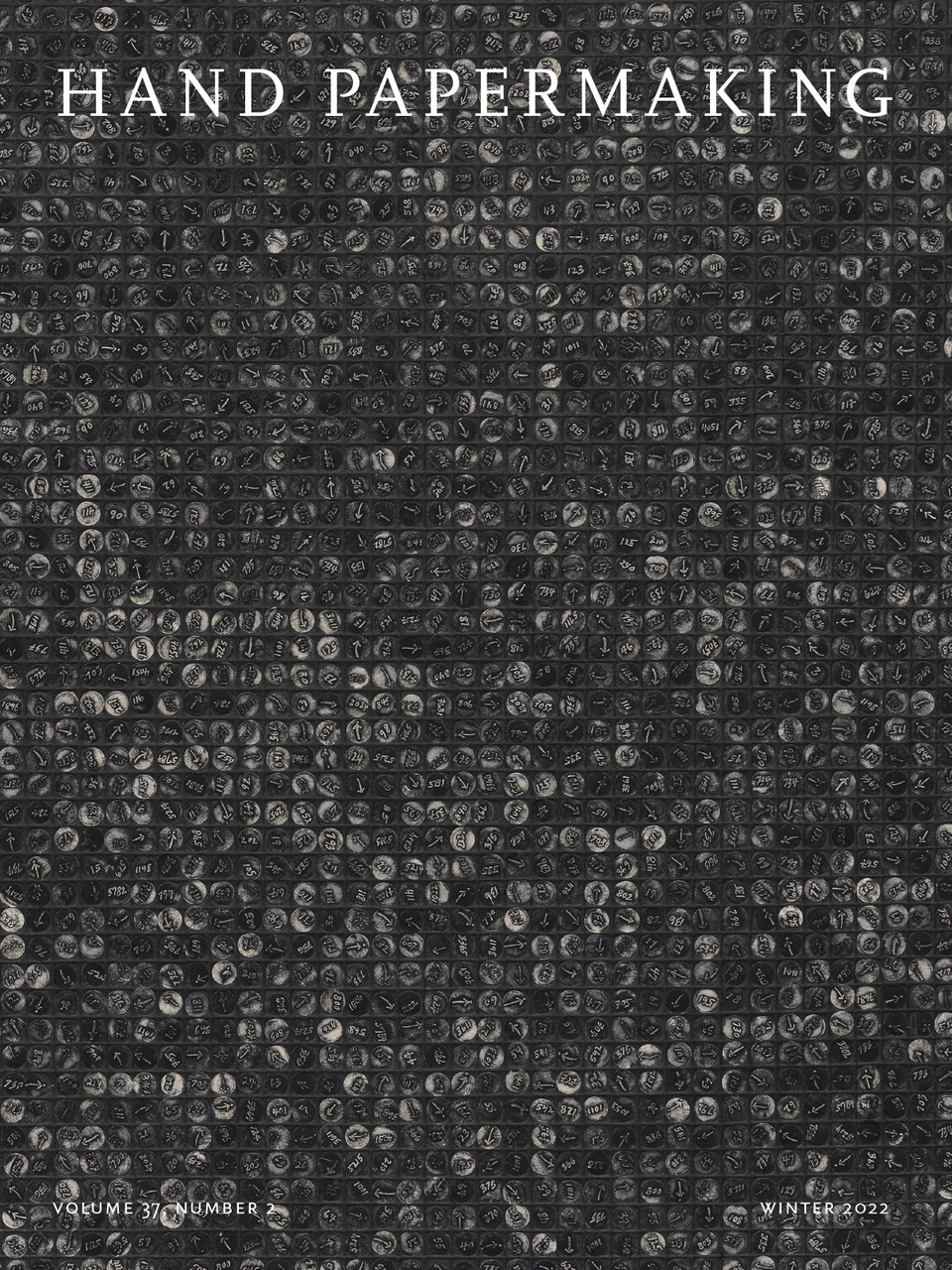This pattern was traced from a kimchi apron that I bought in Seoul at Namdaemun Market, where vendors who sell aprons in all kinds of colors and designs are usually grouped together. Most kitchen aprons fall at the thigh, but a longer apron is key during the fall season of kimjang, when kimchi is made in huge quantities. I prefer aprons made of lightweight, water-resistant material, with straps that fall over the shoulders rather than tugging on the back of the neck. Because I loved the design, I traced and examined it to make a few more. While I am not a pattern maker or expert sewist, this is a basic guide to help anyone interested in making a light, ergonomic papermaking apron.
materials
•
1.5 yards of laminated cotton (I bought mine in person from Stonemountain & Daughter Fabrics in Berkeley, California, but you can order from any fabric store that carries it. Oilcloth is much heavier so I prefer laminated cotton, which has a clear waterproof layer on the fabric’s right side)
•
7 yards of double-fold bias tape, 0.25 inches wide (two packs of 4-yard bias tape)
• Polyester sewing thread
tools
•
Sewing machine
•
Scotch tape OR a non-stick presser foot
•
Sewing clips (not pins, which create permanent holes in the fabric)
•
Sharp scissors (a rotary cutter and acrylic ruler are helpful to cut the fabric)
sewing tips
•
Use non-stick presser foot, or apply matte tape to the bottom of your presser foot and cut the tape to the shape of the foot. This enables the sticky laminated fabric to move smoothly
•
Sew with the laminate side up when possible
•
The laminate side is unforgiving, so try to be accurate since holes are permanent; constant seam ripping will compromise the fabric
•
Set your stitches wide
•
Use up to a 0.5-inch seam allowance
Fold your fabric in half along the grain and cut the body of the apron. A full width at the bottom of 35 inches will provide a 0.5-inch seam allowance. The top of the apron can be cut at 12 inches and you can cut the curve from the top to the side of the apron to fit your body. Mine is 33.5 inches tall from the bottom to the waist strap, and 42 inches from top to bottom. You can adjust to your height, girth, and where a waist tie would fall most naturally; use clips to attach components to your fit before sewing.
Cut and prepare:
•
2 waist ties, 1 inch x 20 inches each, tapered at one end. Sew bias tape onto longest edge of each tie
•
2 shoulder straps, 1.25 inches x 27 inches each (the length can vary depending on where your apron sides fall. If they are too long, the apron sits low on your chest and gapes out in back). Sew bias tape onto only one edge of each strap
•
1 connector strap, 1.25 inches x 8.6 inches. Sew bias tape onto both edges.
With the unfinished edge oriented to the top, place one tie against the top side edge of the body, wrong faces together. Fold the side edge over the tie and clip over seam that has encased strap; fold over, clip, and finish side seam. Fold tie over to extend out from the body, sew its width on top of seam to secure. Repeat on opposite side.
With straps pointing to bottom, place each shoulder strap edge flush to top of apron edge, wrong sides facing; the inner edges of shoulder straps are finished with bias tape. Clip bias tape over each strap and top edge, sew tape onto top apron edge.
Flip straps up and secure each by sewing width on top of bias tape.
Clip connector strap edges to shoulder straps 12 inches from the top of the apron (you can adjust where this strap falls).
Start sewing bias tape onto remaining (outer) edge of shoulder strap from its free end and encase connector strap inside bias tape on the way. Before completing bias finish on slope of apron, clip free end of shoulder strap to lower curve of side, wrong sides facing, with strap pointing to bottom (you can clip to the corner of the apron or up to 3.5 inches in from the side).
When you arrive at this end, encase the end of the strap inside the bias tape and continue to finish at the end of the waist tie.
Flip up bottom of shoulder strap and sew width over bias tape to secure. Secure connector strap by sewing width to inner edge of strap on top of bias tape. Repeat on other side.






